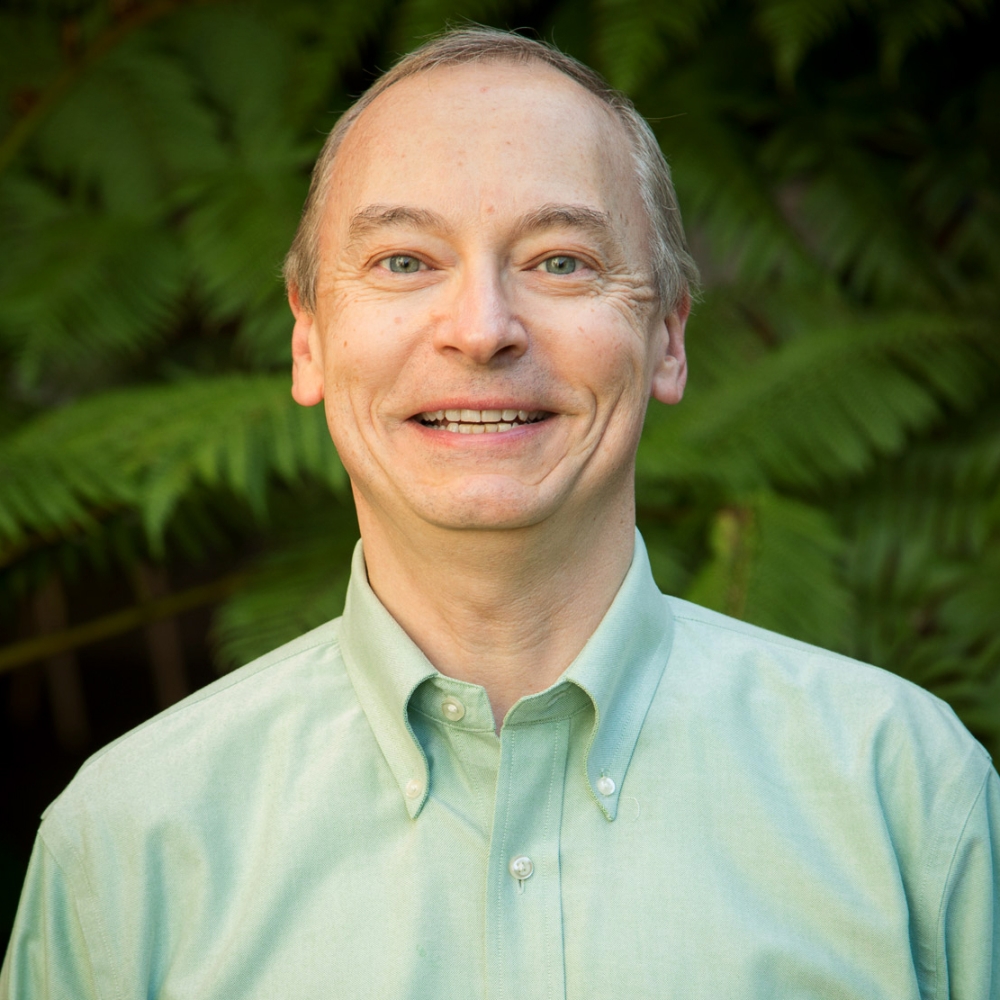 For the diligent computational materials scientist, 2025 started with a bang
For the diligent computational materials scientist, 2025 started with a bang
UC Santa Barbara materials professor Chris Van de Walle, a widely recognized computational materials expert, has had a busy first half of the year. It actually began even before January, when in fall 2024 he received the American Physical Society’s 2025 Aneesur Rahman Prize for Computational Physics, the highest honor given by APS for work in that field. Dating back to 1993, the prize honors Aneesur Rahman, a founder of the field of molecular dynamics who pioneered computational methods for modeling physical systems.
Next, in January of this year, researchers in Van de Walle’s group within The Robert Mehrabian College of Engineering at UCSB had a paper published as the cover article in the January 27 issue of Applied Physics Letters. It explained how adjusting the atomic structure and composition can boost the electro-optic effect of aluminum scandium nitride (AlScN) — previously been identified as an excellent piezoelectric — by making it possible to better control the material’s properties.
The electro-optic effect supports such vital applications as light modulation and frequency transduction, which rely on nonlinear optical materials in which light waves can be manipulated by applying electric fields. Strong electro-optic response requires a large concentration of scandium, but the specific arrangement of the scandium atoms within the AlN crystal lattice matters.
“By using cutting-edge atomistic modeling, we found that placing scandium atoms in a regular array along a specific crystal axis greatly boosts the electro-optic performance,” explained Haochen Wang, a PhD student in the Van de Wall group who spearheaded the calculations.
This finding inspired the researchers to investigate so-called superlattice structures, in which atomically thin layers of ScN and AlN are deposited alternately, an approach that can be experimentally implemented using sophisticated growth techniques. They found that precisely oriented layer structures do indeed offer significant enhancements in electro-optic properties.
Intriguingly, the scientists also realized that strain can be exploited to tune the properties close to the “Goldilocks” point, where the largest electro-optic enhancements are obtained. Strain can result from externally applied stress, or it can be built into the material through carefully designed microstructures, now a routine approach in silicon technology.
Careful strain tuning could yield an electro-optic effect in AlScN that is up to an order of magnitude greater than in lithium niobate, the current go-to material. “We are excited about the potential of AlScN to push the boundaries of nonlinear optics,” said Van de Walle. “Equally importantly, the insights reaped from this study will allow us to systematically investigate other so-called heterostructural alloys that may feature even better performance.”
Finally, but still only in February (27th), Van de Walle delivered the Dow Lectureship for Research Excellence and Societal Impact at UC Berkeley, speaking on the topic of “Nitride Semiconductors for Energy-Efficient Technologies.” The Dow Chemical Company–endowed lecture is meant to highlight the critical role of materials science in advancing technologies that improve quality of life, such as in energy and sustainability. Featured lecturers are selected based on their having received outstanding recognition in the field for groundbreaking research that has broad technological and societal impact.
Van de Walle performs computational work to develop a fundamental understanding of the physics and chemistry of materials in order to improve existing materials and discover new ones. His work on interfaces has assisted generations of semiconductor physicists in designing novel heterostructures, and his methodologies have helped guide the development of devices such as transistors and lasers, and recently the structures that underlie novel qubits.



